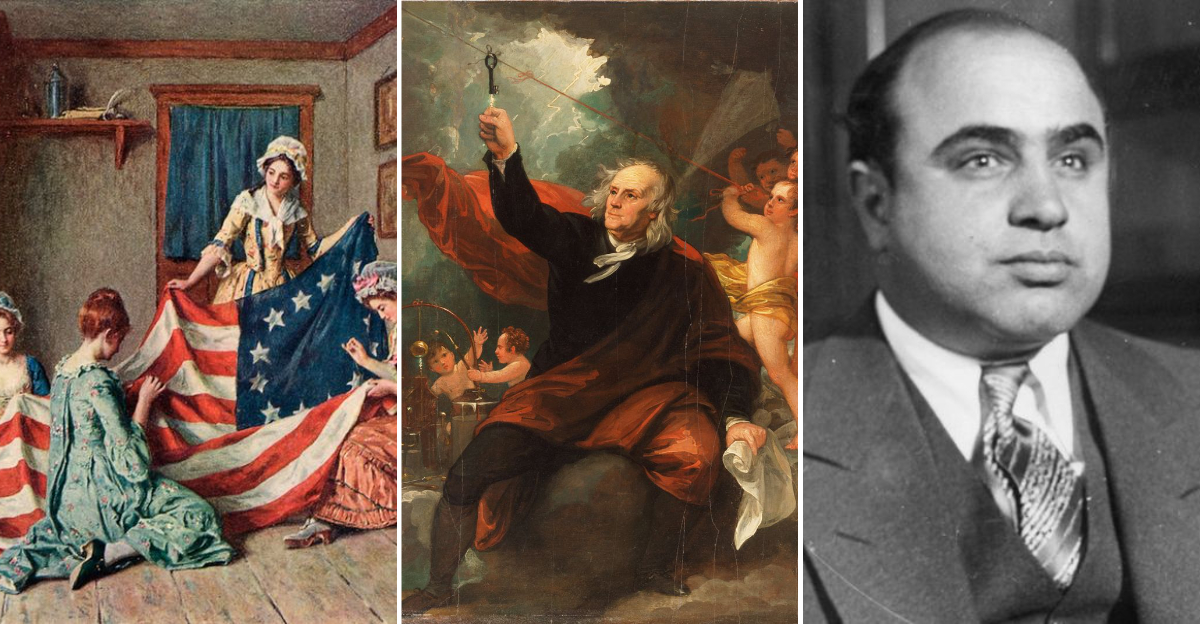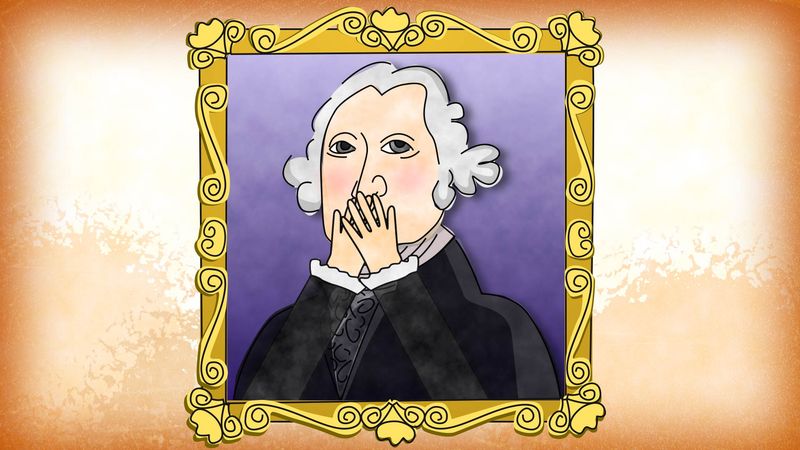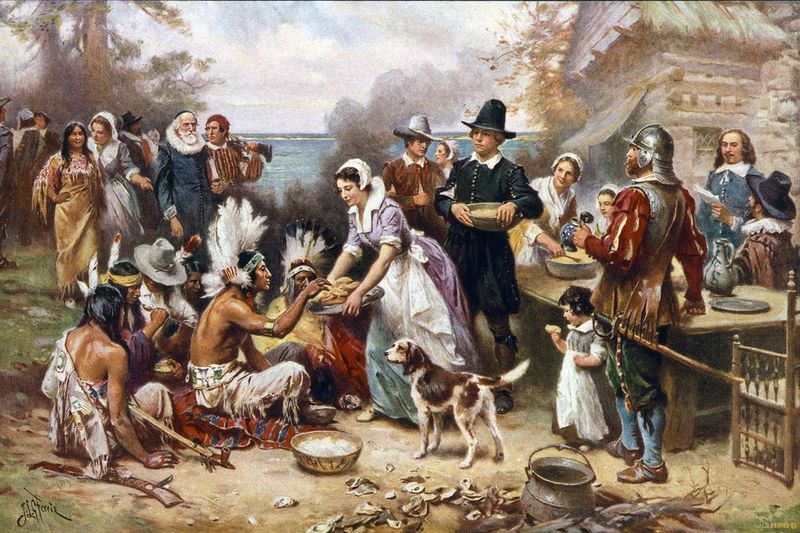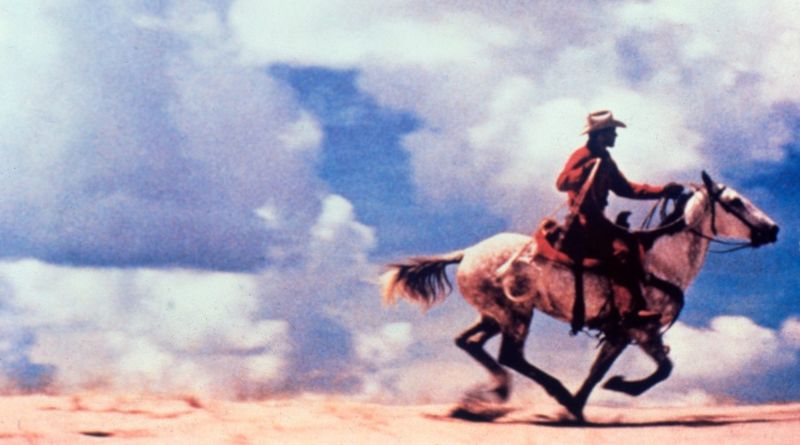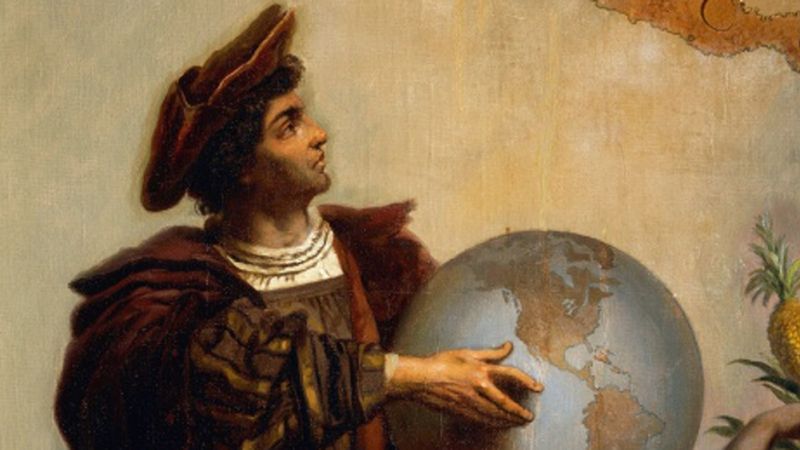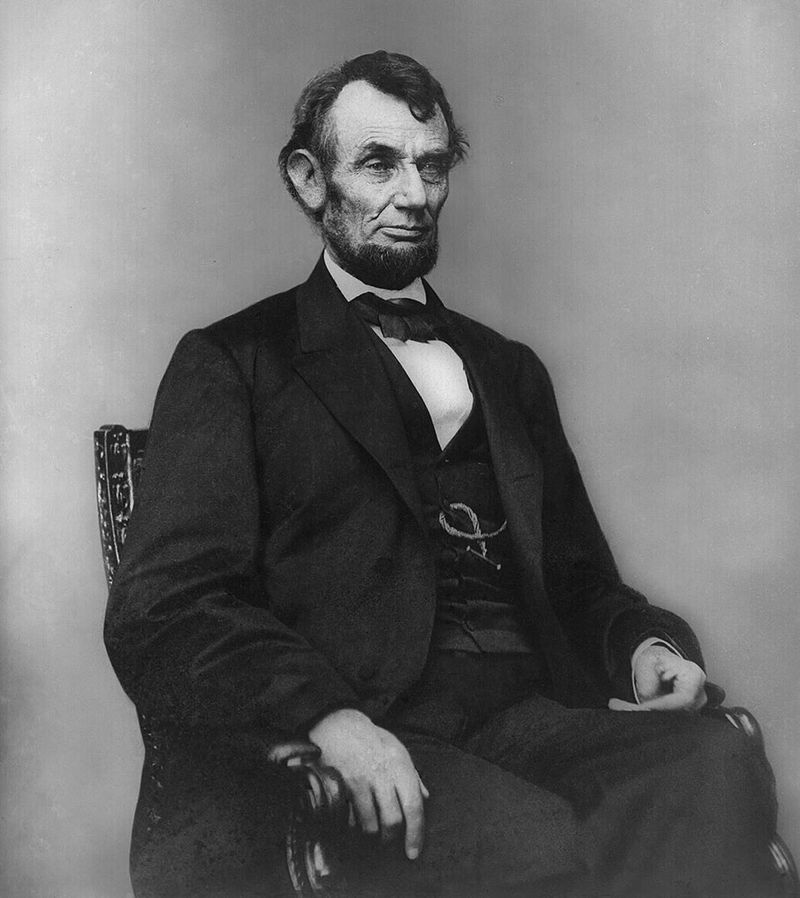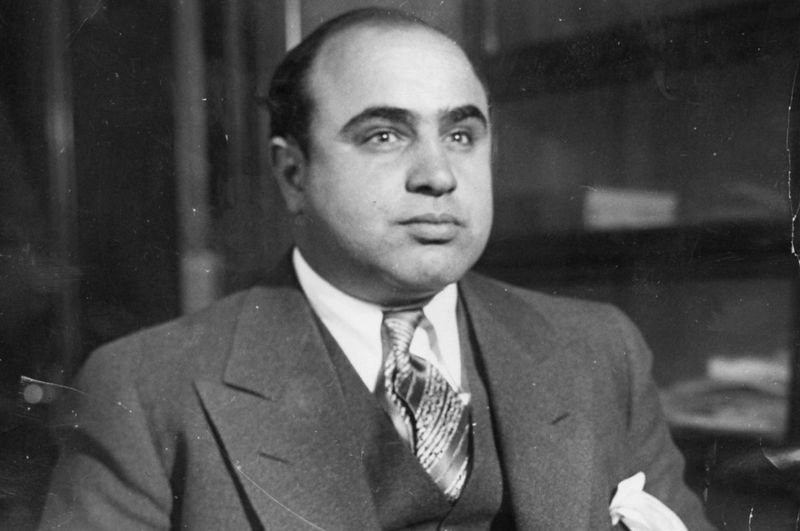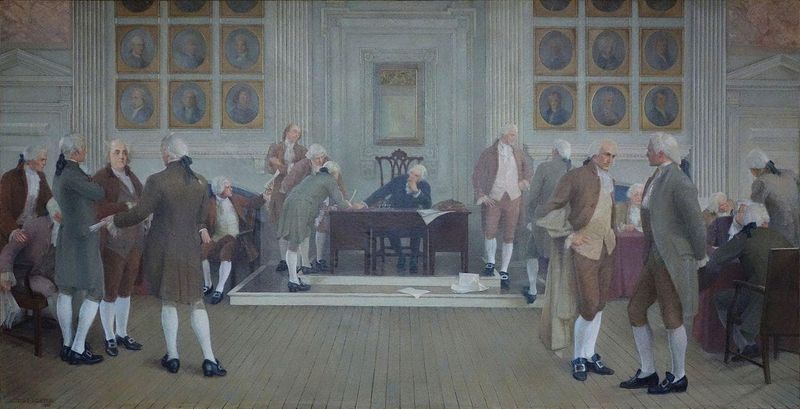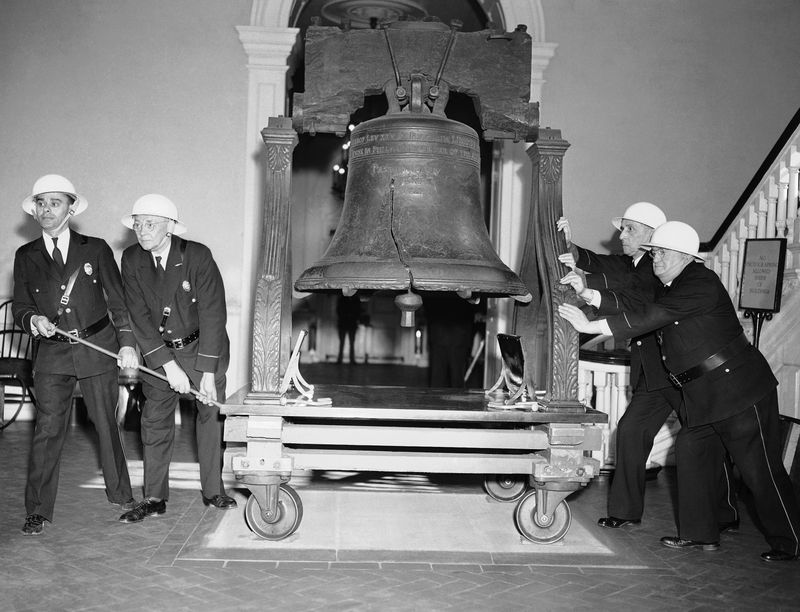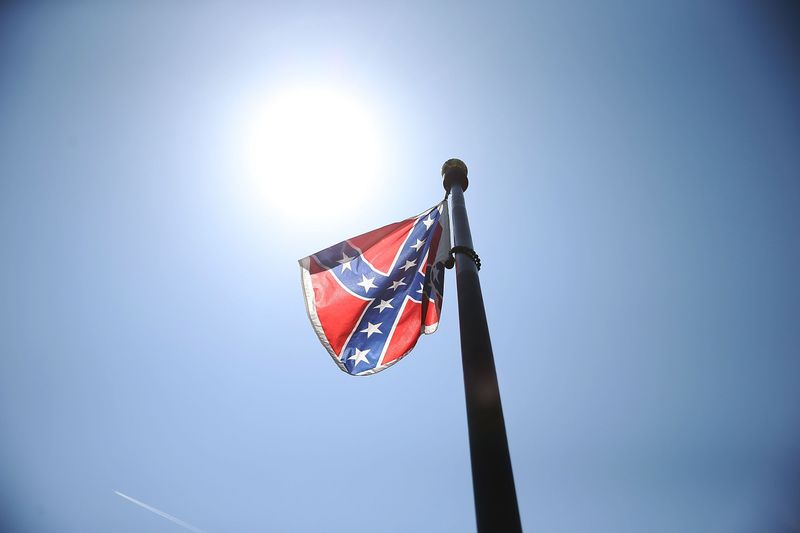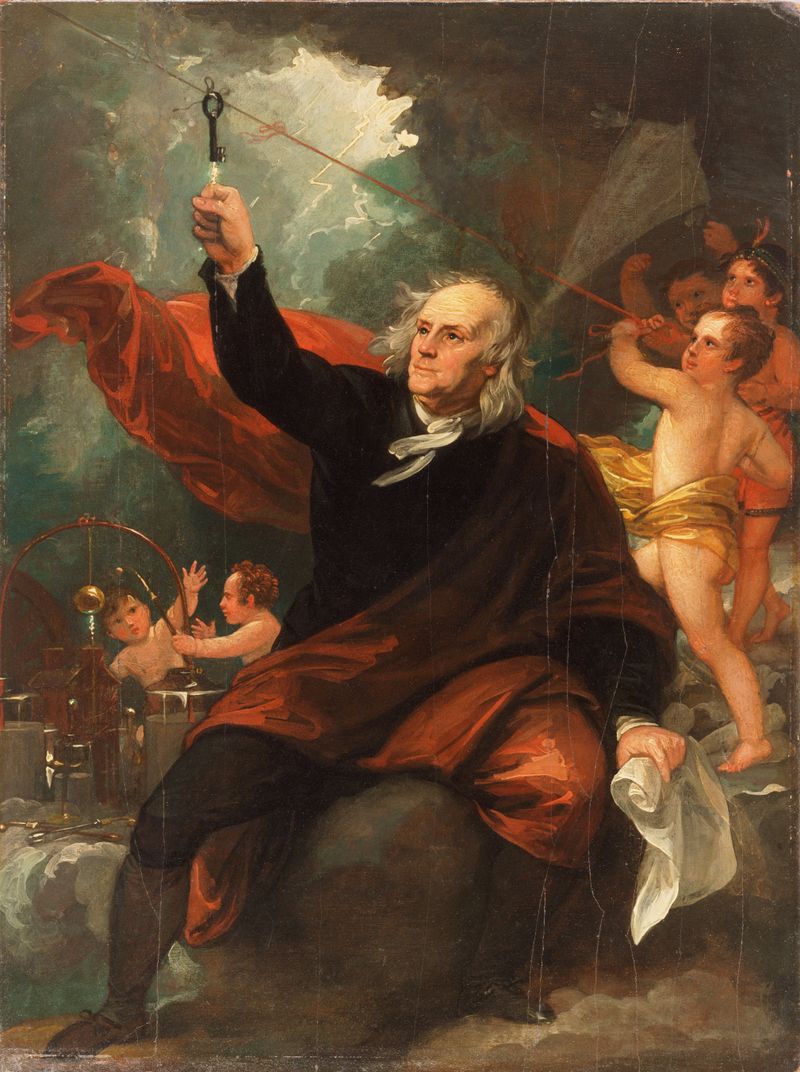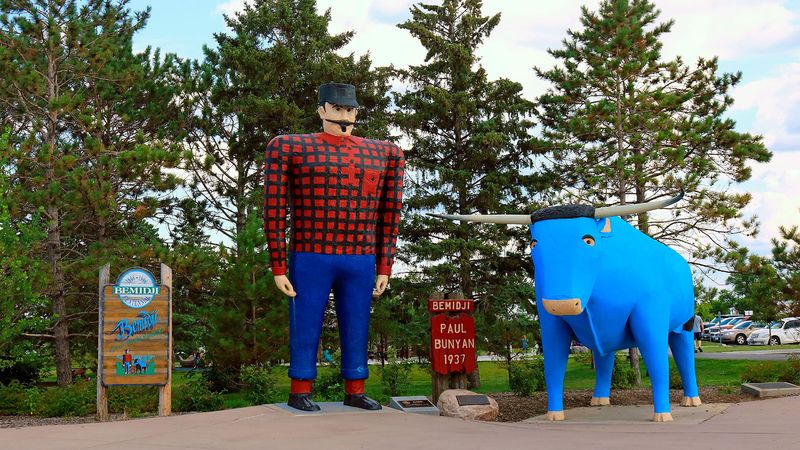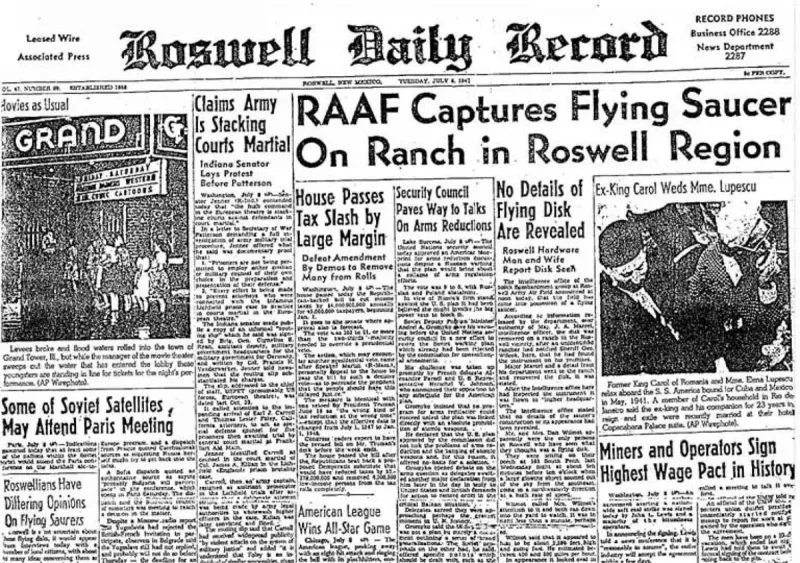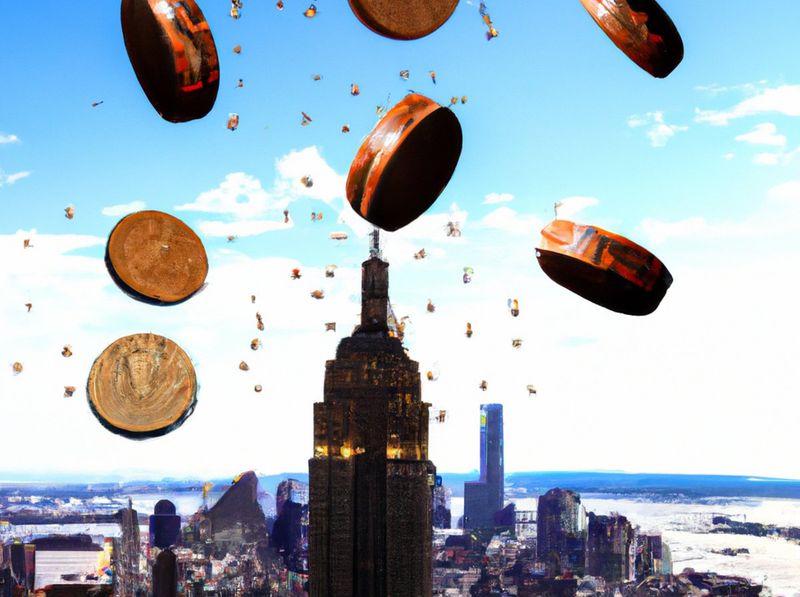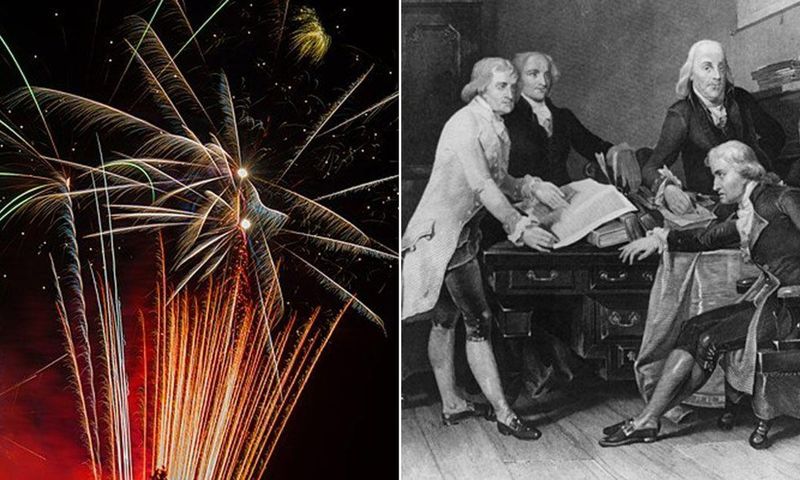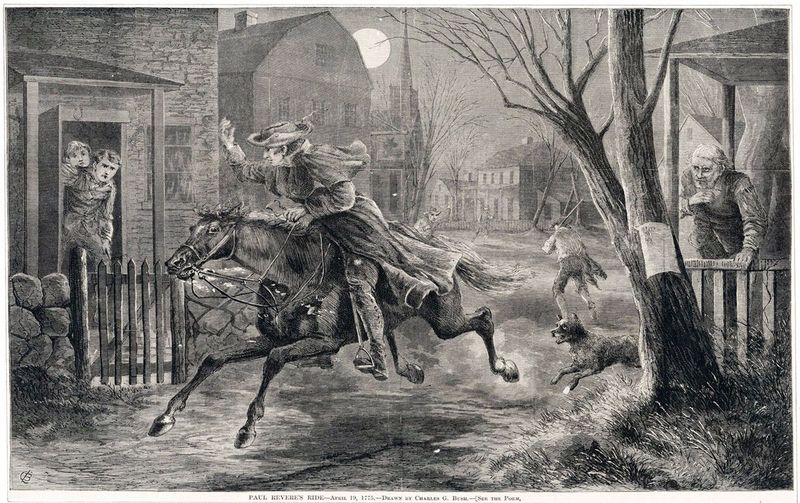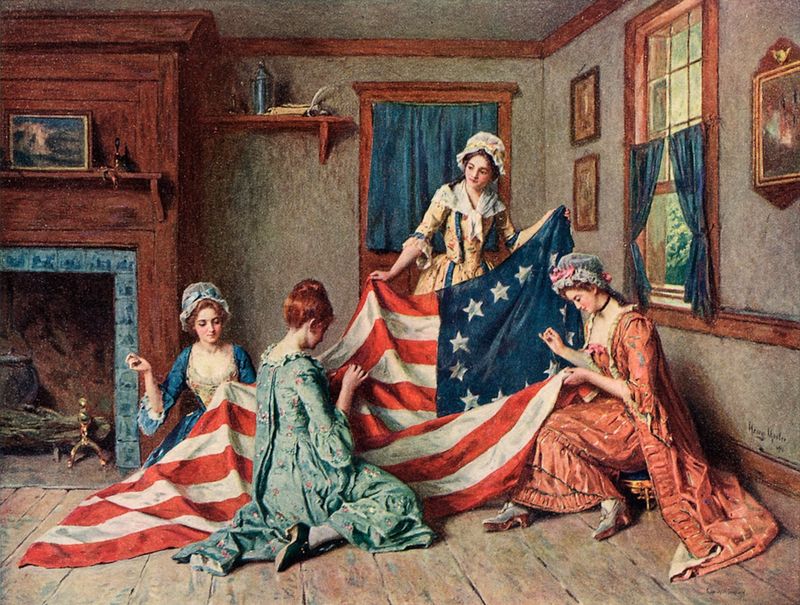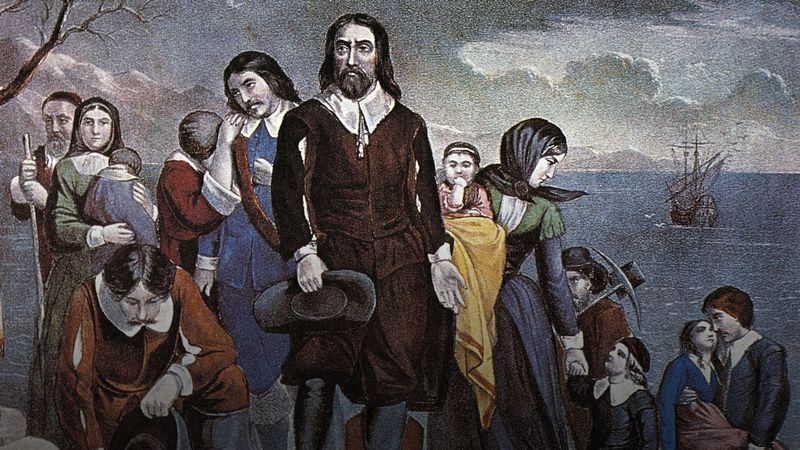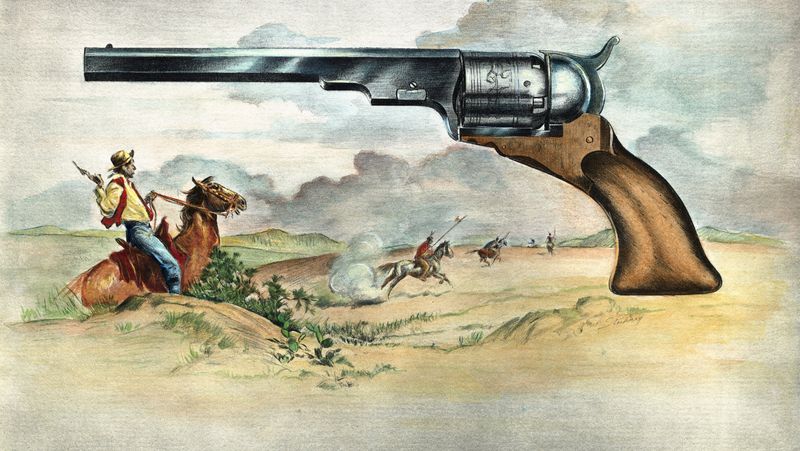For decades, certain myths have woven themselves into the fabric of American culture, persisting through generations. These myths, believed by many, have been debunked with time and research, revealing truths sometimes stranger than fiction.
From historical inaccuracies to misunderstood cultural icons, these myths have shaped beliefs and influenced behaviors. Here, we unravel 24 myths that many Americans took as gospel, only to have the truth emerge and shatter long-held beliefs.
Embark on this enlightening journey as we uncover the myths and truths that define America’s collective consciousness.
1. Myth of George Washington’s Wooden Teeth
George Washington’s iconic image often includes the myth of wooden teeth. However, his dentures were not made of wood but a combination of materials like ivory, metal alloys, and even human teeth. These uncomfortable contraptions contributed to his reserved expression in portraits.
The misconception may have arisen from the stained appearance of the materials, which resembled wood. This myth highlights the importance of examining historical facts rather than relying on myths. Washington’s struggle with dental issues was real, but wooden teeth were never part of it.
Today, his dentures remind us to seek truth in history.
2. The First Thanksgiving
The image of the first Thanksgiving is often romanticized as a harmonious feast between Pilgrims and Native Americans.
In reality, this event was more complex and less idyllic. Historical accounts suggest that the meal celebrated a successful harvest, with contributions from the Wampanoag tribe.
However, this gathering was not an annual tradition initially, and the relationship between the two groups was fraught with tension and misunderstandings. Over time, the story evolved into a symbol of unity, overshadowing the reality of conflict and survival.
Understanding the true nature of Thanksgiving adds depth to this cherished tradition.
3. The Myth of the Cowboy’s Lifestyle
For years, the image of the American cowboy has been romanticized as the lone ranger, living a life of adventure and freedom.
The reality, however, is that cowboys worked grueling hours under harsh conditions, often for meager pay. They were more akin to laborers than the heroic figures portrayed in films.
Most cowboys were young men who managed cattle drives, facing dangers like stampedes and harsh weather. Their life was marked by hard work and little time for the adventures romanticized in stories.
This myth overlooks the diverse background of cowboys, including a significant number of African-American and Mexican cowboys.
The cowboy’s lifestyle, while rugged, was far from the glamorous portrayal. Understanding their true role highlights the challenges faced by these workers and the multi-ethnic roots of the cowboy tradition.
4. Columbus Discovered America
The narrative that Christopher Columbus discovered America is a well-entrenched myth. Columbus never set foot on the mainland of North America; he landed in the Caribbean in 1492. Indigenous peoples had inhabited the Americas long before his arrival.
The “discovery” narrative oversimplifies a complex history involving exploration, colonization, and cultural exchange. Columbus’s voyages did open the door to European exploration but also ushered in eras of conquest and suffering for Native populations.
Revisiting this myth allows a more nuanced understanding of history, emphasizing the need for recognizing indigenous contributions and presence.
5. The Fortune Cookie Origin
Fortune cookies are often associated with Chinese cuisine, yet they originated in the United States. This myth likely arises from the cookies’ association with Chinese restaurants, particularly in America.
Their creation traces back to Japanese immigrants in California during the late 19th century. These treats were adapted and popularized in Chinese eateries during the early 20th century.
The myth underscores how cultural interactions shape culinary traditions, masking the true origins with assumed identities. Recognizing the fortune cookie’s American roots enriches our appreciation of cultural fusion in gastronomy.
6. Myth of Abraham Lincoln’s Penny Pinching
Abraham Lincoln, known for his wisdom and leadership, was often thought to be thrifty to the point of being miserly. In reality, Lincoln was generous and aware of the power of money as a tool for growth and stability.
His administration saw increased spending to navigate the Civil War, making him an early advocate for strategic financial planning. The penny-pinching myth likely arose from stories highlighting his humble beginnings.
Ultimately, Lincoln’s financial policies laid foundational stones for the modern American economy.
7. The Myth of Al Capone’s Untouchability
Al Capone is often remembered as the untouchable mob boss who evaded law enforcement at every turn during the Prohibition era. While his influence and power were considerable, he was far from invincible. Capone’s downfall came not through violent confrontations but through tax evasion charges.
The government, unable to pin more heinous crimes on him, turned to his financial records. In 1931, Capone was found guilty of tax evasion and sentenced to 11 years in federal prison, a stark contrast to his previously unassailable image.
This myth serves as a reminder that even the most notorious criminals can be brought down by mundane legal means. It shines a light on the importance of diligent law enforcement and the perseverance required to uphold justice.
8. The Myth of the Plymouth Rock Landing
The story of the Pilgrims landing on Plymouth Rock in 1620 has become a cornerstone of American folklore, symbolizing the birth of a new nation. However, historical evidence suggests that Plymouth Rock was not mentioned in any early Pilgrim accounts. The rock’s significance was likely embellished years later.
In reality, the Pilgrims may have landed nearby, but there’s no contemporary documentation confirming Plymouth Rock as the exact site. The myth grew as a symbol of perseverance and hope, but it is more legend than fact.
Understanding this myth’s origins helps in appreciating the broader story of early settlers and the challenges they faced. It encourages a reflection on the narratives we choose to celebrate in history.
9. The Myth of Marilyn Monroe’s Intelligence
Marilyn Monroe is often remembered for her beauty and iconic roles in Hollywood, yet she was frequently underestimated regarding her intelligence.
Contrary to the “dumb blonde” stereotype, Monroe was an avid reader with a personal library of over 400 books, including works on philosophy and art.
She was known to engage in intellectual discussions with prominent figures of her time, striving to break free from the public’s limited perception. Monroe took acting seriously, studying at the Actors Studio to hone her craft.
This myth challenges the superficial judgments often placed on public figures, reminding us of the complexities behind the glamour and the intelligence that many did not recognize.
10. The Myth of the Founding Fathers’ Unified Vision
The Founding Fathers of the United States are often idealized as a group of visionaries united in purpose and ideals.
In truth, they were a collection of individuals with diverse and often conflicting viewpoints. Debates during the Constitutional Convention were intense, leading to compromises.
Issues like states’ rights, federal power, and slavery were contentious, and the Founders’ disagreements sometimes bordered on animosity. The Constitution itself was a product of negotiation, reflecting varied interests rather than a singular vision.
This myth underscores the messy and complex processes of nation-building. Recognizing these differences offers a more nuanced view of history and highlights the importance of dialogue and compromise in governance.
11. The Saluting Liberty Bell
The Liberty Bell is often thought to have rung to mark the signing of the Declaration of Independence, but this is a myth. The bell was likely damaged before this historic event and was silent on July 4, 1776.
Its iconic crack emerged later, rendering it unusable for ringing. Despite its silence, the Liberty Bell became a powerful symbol of American independence and freedom.
Correcting this myth doesn’t diminish the bell’s significance but instead enriches its story. It stands as a testament to resilience and the enduring quest for liberty.
12. Myth of the Confederate Flag’s Original Meaning
Contrary to popular belief, the Confederate flag commonly recognized today was not the official flag of the Confederate States during the Civil War.
It was actually a battle flag of the Army of Northern Virginia. Over time, it became a symbol of Southern heritage and, controversially, of racial tension.
Understanding its origins helps in comprehending the complexities of its contemporary usage. The flag’s meaning has evolved, and it remains a contentious symbol in modern America, sparking debates about history and heritage.
13. Ben Franklin’s Kite and Key Experiment
The story goes that Benjamin Franklin discovered electricity by flying a kite during a thunderstorm. While it’s true that he conducted experiments with electricity, the dramatic kite tale is more myth than fact.
In reality, Franklin’s experiments were more methodical and less dangerous than the tale suggests. His work laid the groundwork for understanding electricity, but he wasn’t struck by lightning as the myth implies.
This myth exemplifies how stories can become exaggerated over time, illustrating the power of narrative in shaping historical figures’ legacies.
14. The Myth of Paul Bunyan
Paul Bunyan, the legendary giant lumberjack, is a staple of American folklore, often credited with shaping the country’s vast landscapes through his enormous strength and size. However, this larger-than-life figure is entirely fictional.
He was created as a tall tale to entertain and promote the logging industry in the early 20th century.
While Bunyan’s adventures are purely mythical, they reflect the spirit and ambition of the American frontier era. These tales were used as a marketing tool to attract workers to the logging camps, painting a picture of rugged adventure.
15. Myth of the Poisoned Halloween Candy
The widespread fear that strangers poison Halloween candy has been a persistent myth for decades. In reality, there are no verified cases of strangers randomly poisoning Halloween treats. This myth likely stems from a few isolated incidents involving family members.
The myth persists due to sensational media coverage and parental fears. While it’s always wise to inspect candy, the biggest risk is usually the sugar content rather than poison. Parents are encouraged to accompany their children and ensure safety through vigilance, not fear.
16. The Myth of the Roswell UFO
In the summer of 1947, the crash of an unidentified object near Roswell, New Mexico, sparked decades of speculation about UFOs and alien encounters. Many believed it was a top-secret alien spacecraft. However, declassified documents later revealed it was a high-altitude balloon from Project Mogul, designed to detect Soviet nuclear tests. The myth persisted due to military secrecy and popular culture, fueling countless alien theories. The truth, however, is much more grounded, tied to Cold War espionage rather than interstellar visitors.
17. Penny Dropped from Empire State Building
The myth that a penny dropped from the Empire State Building could kill someone is a dramatic exaggeration. While the penny would reach a high speed, it lacks the mass and aerodynamic shape to cause serious harm.
The penny’s terminal velocity is insufficient to penetrate skin, and factors like wind resistance further reduce its impact. This myth likely persists due to the dramatic imagery it conjures.
Understanding the physics behind this myth dispels unnecessary fears. It highlights the importance of questioning sensational claims and appreciating the role of science in unraveling urban legends.
18. The Myth of Independence Day on July 4th
Many Americans celebrate Independence Day on July 4th, believing it’s the day the Declaration was signed. In reality, the Continental Congress formally adopted it on July 2nd, 1776. The printed copies bore the date July 4th, leading to the mix-up.
The first celebrations were held on July 8th, with fireworks and music marking the occasion. July 4th eventually became the symbolic date, enshrined in national tradition.
Understanding this myth highlights the evolution of American traditions and the power of symbolism.
19. Paul Revere’s Sole Midnight Ride
The iconic tale of Paul Revere’s midnight ride is ingrained in American folklore, symbolizing bravery and patriotism. However, the reality is that Revere was not alone in this daring act. He was part of a network of riders, including William Dawes and Samuel Prescott, who spread the alarm about the British approach.
Revere’s journey was cut short when he was caught by British patrols. Fortunately, Prescott managed to evade capture and continued to warn the towns of Concord and beyond. This collaborative effort was crucial to the colonial resistance, yet it is Revere’s name that echoes through history.
Understanding the collective nature of this mission illuminates the importance of teamwork in pivotal moments. Such myths often simplify complex events into single narratives, overshadowing the contributions of others involved.
20. The Myth of Betsy Ross’s Flag
For years, the story of Betsy Ross creating the first American flag has captured the imagination of many. The tale was popularized by her grandson in the 1870s, claiming she was personally asked by George Washington to design the flag.
Historical evidence to support this story is sparse. No documents from the Revolutionary period directly tie Ross to the flag’s creation. It’s likely the flag evolved over time through contributions from various sources, rather than being the work of a single individual.
This myth endures partly because it highlights female contribution to the nation’s founding, a narrative that resonates with many. However, acknowledging the collective input in the flag’s development presents a more accurate representation of American history.
21. The Myth of the Clean Pilgrims
The popular portrayal of pilgrims as clean, almost pristine settlers is a misconception perpetuated over time. In reality, the early settlers faced harsh conditions and a lack of resources, making cleanliness a significant challenge.
Hygiene practices during the 17th century were rudimentary at best. The pilgrims often wore the same clothes for extended periods and had limited access to bathing facilities. Hardship, rather than cleanliness, was a defining characteristic of their daily lives.
This myth arose from romanticized depictions in artworks and literature, presenting an image far removed from the authentic settler experience. Understanding their true living conditions fosters a more profound respect for their resilience and determination.
22. The 100-Year-Old Hot Dog
The urban legend of century-old hot dogs remaining edible is more fiction than fact. Although preservatives extend shelf life, no food item can remain safe to eat for such an extended period.
This myth likely plays into humorous overstatements about processed foods. Understanding food safety and preservation practices helps dispel such exaggerations.
Acknowledging the limits of food longevity encourages better practices in consumption and storage. It serves as a reminder of the importance of freshness and quality in our diets, steering clear of sensational myths.
23. Thomas Edison Invented the Lightbulb
While Thomas Edison is often credited with inventing the lightbulb, he actually improved upon earlier designs. Inventors like Humphry Davy and Joseph Swan laid the groundwork for electric lighting.
Edison’s contribution was developing a practical and long-lasting filament, making electric light commercially viable. This myth simplifies the collaborative nature of innovation, overshadowing the efforts of many.
Recognizing the true history of the lightbulb fosters a deeper appreciation for technological advancements. It highlights the importance of acknowledging collective achievements rather than attributing breakthroughs to single individuals.
24. The Myth of Wild West Gunfights
The image of the Wild West, filled with frequent gunfights and lawless towns, is a staple of American pop culture. Yet, these depictions exaggerate the violence of the era.
While gunfights did occur, they were not as common as movies and books suggest. Many towns had strict gun control laws, and most disputes were resolved without violence. The notorious showdowns were the exception, not the rule.
This myth persists due to its sensational appeal, but recognizing the more nuanced reality of the Old West offers a richer understanding of American history. Exploring these misconceptions can provide insight into how legends and facts intertwine over time.
